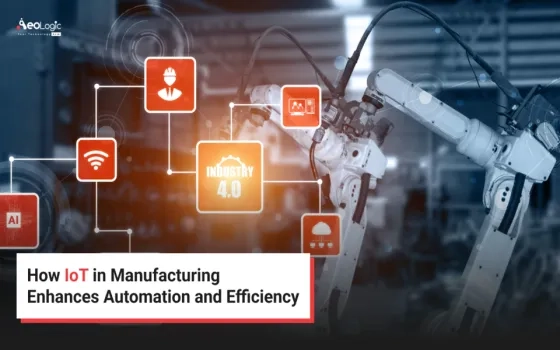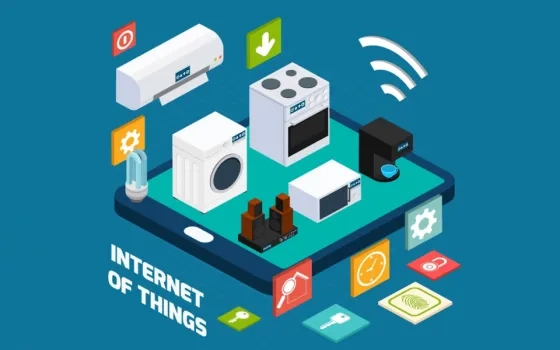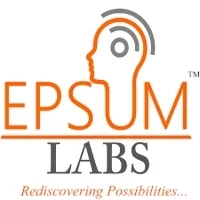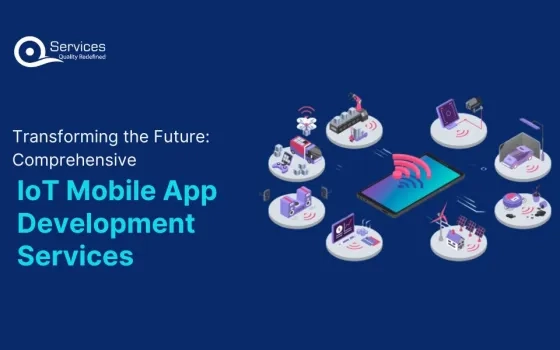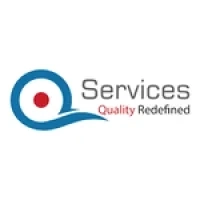“When we talk about the Internet of Things, it’s not just putting RFID tags on some dumb thing so we smart people know where that dumb thing is. It’s about embedding intelligence so things become smarter and do more than they were proposed to do.” – Nicholas Negroponte
Sometimes, it feels as if everything that can be said about internet of things has already been said. We’ve been told that it’s the beginning of a new world, and we’ve been told that it’s the end of ours. Sci-fi stories have filled us with both awe and dread. We are never sure we are fully in control but, like a moth to a flame, we find ourselves pushing the envelope just that little bit more.
It might surprise many to know that IoT, even as a working model, has been around since the 1970s when a Coke machine at Carnegie Mellon University was hooked up to a server just so that students didn’t need to make a pointless trip down to an empty machine. Convenience has often been a key driver of progress in IoT, but it would be unfair to say that other developments have not influenced IoT as we perceive it today.
With accompanying improvements in data transmission speeds, miniaturising of chips, increased processing power and sensitivity in sensors and productive development environments, Internet of Things has now become a key component of the fourth Industrial revolution.
IoT – Then and Now
If we were to take the Coke machine as a benchmark, IoT has been around in various forms since then. Once the concept was proven and as computers became more propular, companies started to hook up their manufacturing machines to computers. These implementations were quite limited in scope and would probably fail modern expectations for IoT. Every space-ship sent out into space even in the eighties and nineties was an IoT system by itself – thousands of sensors monitoring every little detail, all of them interconnected and continuously feeding data back to their home stations.
IoT is a lot more sophisticated than simply saying that it consists of devices that talk to each other over the internet, Bluetooth, radio frequencies, intranet and other channels. IoT devices can be big, small or minuscule. They can be online all the time or just some of the time. They can be active, with their own power sources and control modules, or passive, activated only by the presence of another device. They can be pure-play sensors, sensor-equipped machines or simply machines that can be controlled from another location.
Since it has so many applications, it might make more sense to group the devices and solutions under the functions they serve: person, home, office and industry.
IoT For Person
Wearable technology has been around for some time now, but it is still a relatively new field. With recent advancements in miniaturisation, many of these devices have also become capable multi-functional touchpoints. IoT for person can be further drilled into three separate verticals based on their purpose – commercial (which would include tracking movement of people inside a facility, granting/denying access to classified areas, etc.), lifestyle (such as fitness trackers and smart watches), medical (blood-sugar monitors, REM trackers, etc.) and veterinary (microchipping of pets livestock and endangered animals)
The Welgovenden Game Reserve in South Africa, for instance, has gone beyond merely tagging the endangered species they have been tasked with protecting. They have put in place an entire network of IoT devices that monitor not only the animals themselves but also sections of the forest for movement and other disturbances. Interestingly, the data from the IoT devices are fed into (machine) learning systems that can then ‘learn’ to correlate causes and effects.
In developed countries, electronic shackles are already easing the congestion at jails. Primarily aimed at restricting the movement of convicts and suspects who are not considered critical dangers to their community, these shackles – which take the form of ankle monitors, shock-collars or simple boundary markers – have been around for a while now. With security implications being rather more obvious here, R&D has never stopped, nor is it likely to.
A quick glance at Hackster.io reveals more than 350 active projects around wearable technology, ranging from the absurd to the cool. This is just a fraction of the actual number of projects that are happening all over the world even as you read this. There are plenty of resources available today for programming wearable devices, and this has further democratised development in the field instead of restricting it to a few wealthy corporations.
IoT for Home
One of the first fillips to R&D in IoT came from home automation. At the time, the novelty factor paid for the expensive setup and maintenance costs. An elegant home automation solution was nothing if not an expensive indulgence, the equivalent of a private jet parked on the driveway for the neighbors to envy. Naturally, over time – and perhaps too quickly for companies who were just entering the space – the interest faded away. Success stories were the exception, not the norm.
But a combination of better broadband connectivity and advancements in circuitry has revived interest in the field once again, so much so that economies of scale are finally becoming a reality. Home automations, at least in part, have become affordable purchases today.
IoT @ Home can be classified into 3 subcategories based on its principal area of application: lifestyle, security and medical.
Lifestyle refers to the use of IoT for actions such as controlling the lighting (such as changing the brightness, colors or switching it on/off to give people the impression that the house is being occupied), air-conditioning (turning it on, for instance, when the homeowners are arriving), utilities (water and electricity supplies, quality control), etc.
Security refers to the use of IoT for securing the premises through the use of motion detectors, pressure pads, controlled access for domestic help to specific parts of the house in the owner’s absence, remote monitoring, locking and unlocking of doors and detectors for fire, flooding and gas leakages.
Medical IoT @ Home is typically found in places where there is a resident who needs constant medical monitoring, if not medical care itself. These devices might manage everything from period administering of medicines, motion-activated light sensing, smart locks (in case someone has an accident behind a locked door), hotlines to emergency personnel, automated escalation systems, etc. Experts believe that by 2024, medical applications are expected to be at least 25% of at-home implementations.
IoT for# Office
Business applications, on the other hand, already form a major part of spending on IoT these days. The solutions for businesses fall under one of three categories as well: administrative, movement and security.
Administratively, a major chunk of an organization’s fixed expenditures are due to consumption of electricity and water. Electricity usage, in turn, is driven principally by lighting and air-conditioning which are usually on 24×7, even when the office is less than optimally staffed. With sensors to monitor occupancies in every zone of the office, a smart business can turn resources on and off as required without needing manual oversight, freeing up an administrator for more unstructured work without affecting productivity of its employees. Philips has already invested in this field in a big way with their Lighting venture and the strides they’ve made makes for a fascinating study.
Another area where IoT can help administer an office is in housekeeping. By keeping track of water consumed and by employing sensors in the restrooms, canteens, storage tanks and pipes, an office is less than likely to be stumped by a failure in the systems. A few weeks ago, one of our contacts in the US told us about how his office was putting in place an IoT-driven system that was tracking restroom usage. According to the vendors putting it in, the system would keep track of consumables like soaps and tissues as well as fixtures, and be capable of initiating repurchase orders and repair requests as needed.
Movement of personnel and material is also a key focus area for IoT implementations in the workplace. In offices where hundreds of employees work, or where physical assets such as files and equipment are in constant motion, it is essential that these are all tracked right down to the last foot. Otherwise, valuable hours would be lost in tracing and locating them!
Security is a rather obvious area of focus for IoT solutions for a business. Sensitive assets – physical and otherwise – have to be secured from unauthorized access; at the same time, this needs to be done unobtrusively so as to keep things moving efficiently. A typical office, after all, sees both employees and guests every day, and each of them will have to have their own accesses and limits.
IoT For Industry
Industrial IoT has played a massive role in bringing about the fourth industrial revolution. It has made operations smarter, more responsive. It has helped secure every part of the value chain and ensure quality and process controls. Even with decentralized systems, IoT has eliminated the problems of distance and ensured that plants can operate in sync with company norms.
A few months ago, we worked with a client who offered B2B services for automating legacy plants. We worked on the software, programming it to take in the data from the sensors the client would place on their automators, process it, run it through an algorithm to determine if the operation was still adhering to safety limits and, when it wasn’t, initiate appropriate corrective action. To a large extent, this is the fundamental application of IoT in industrial facilities.
But that’s still only scratching the surface of what IoT can do, as we’ve seen in recent times. In oil fields, sensors are used to detect leaks, determine pressures and flow rates, monitor emissions and wastages and convey all this information to servers situated far, far away. In automobile manufacturing units, sensors weigh metal pieces and robots – directed by computers that take in inputs from other sensors and machines – fit them together into a complete vehicle. In production plants, sensors regulate furnaces. In many of these cases, there are other IoT networks that operate in conjunction to track, detect and regulate the movement of man and material alike.
In other words, IoT in an industrial context could be one of many things. It could be a driver for operational efficiency
- maintaining production schedules and environments at optimum levels and monitoring the running conditions for every piece of equipment to prevent a breakdown (or worse, a meltdown!)
- tracking stock levels or evaluating inputs to production against benchmarks, resulting in less time lost to issues such as poor/unavailable raw materials
- tracking produced goods through every step of the value chain until it leaves the industrial unit
- controlling the use of shared resources such as water, electricity, fuel, etc., depending on the need
It could be a driver for securing the means of production by
- detecting unsafe working conditions, such as leaks, fires or structural weaknesses
- restricting access
- tracking the movement of man and material that might interfere with production
It could even help with customized production for individual orders.
IoT in India
IoT’s presence in India was, until recently, restricted to businesses who could afford the high import costs. Indeed, there hadn’t been enough homegrown products and services in this field to make it easier for someone to adopt IoT. In fact, it has been logistics that has driven IoT adoption more than production, at least until the government’s Make In India campaign found enough traction to boost domestic manufacturing.
IoT can and has helped third-party logistics (TPL) service providers streamline their operations to a large extent. The bigger the warehouses, the more important are the IoT stacks that help operators ship packages in, through and out these facilities. One of the simpler ways, of course, is to tag all packages and personnel with RFID badges and then have a system monitor their movements. This has since evolved to include robot-powered assistance as in the case of GreyOrange, cellphone-driven communications pioneered by Airtel (in India, at least) and solar-power management modules at Writer’s.
In fact, production and adaptation of IoT devices are cheaper now than they have ever been. There are startups looking to actively solve interesting problems in IoT. Two major challenges await them, however – mass adoption in India is price-sensitive, while any high-value proposition must necessarily be backed by a proven track record of successes.
At the same time, the B2B space is more open to experimenting with a new approach than the customers of B2C business models. We’d even stick our necks out and say that this is a great time to get into IoT either as a customer or as a vendor. The entry barriers are low enough but the gains from delighting a customer could be significant. The race, one could say, is on… but far from over!
—
This article was co-authored by Keyur V Bhalavat and Sreeram Ramakrishnan of Plutomen Technologies, a new age technology company focusing on Augment & Virtual Reality, Mobility and emerging technologies.






















